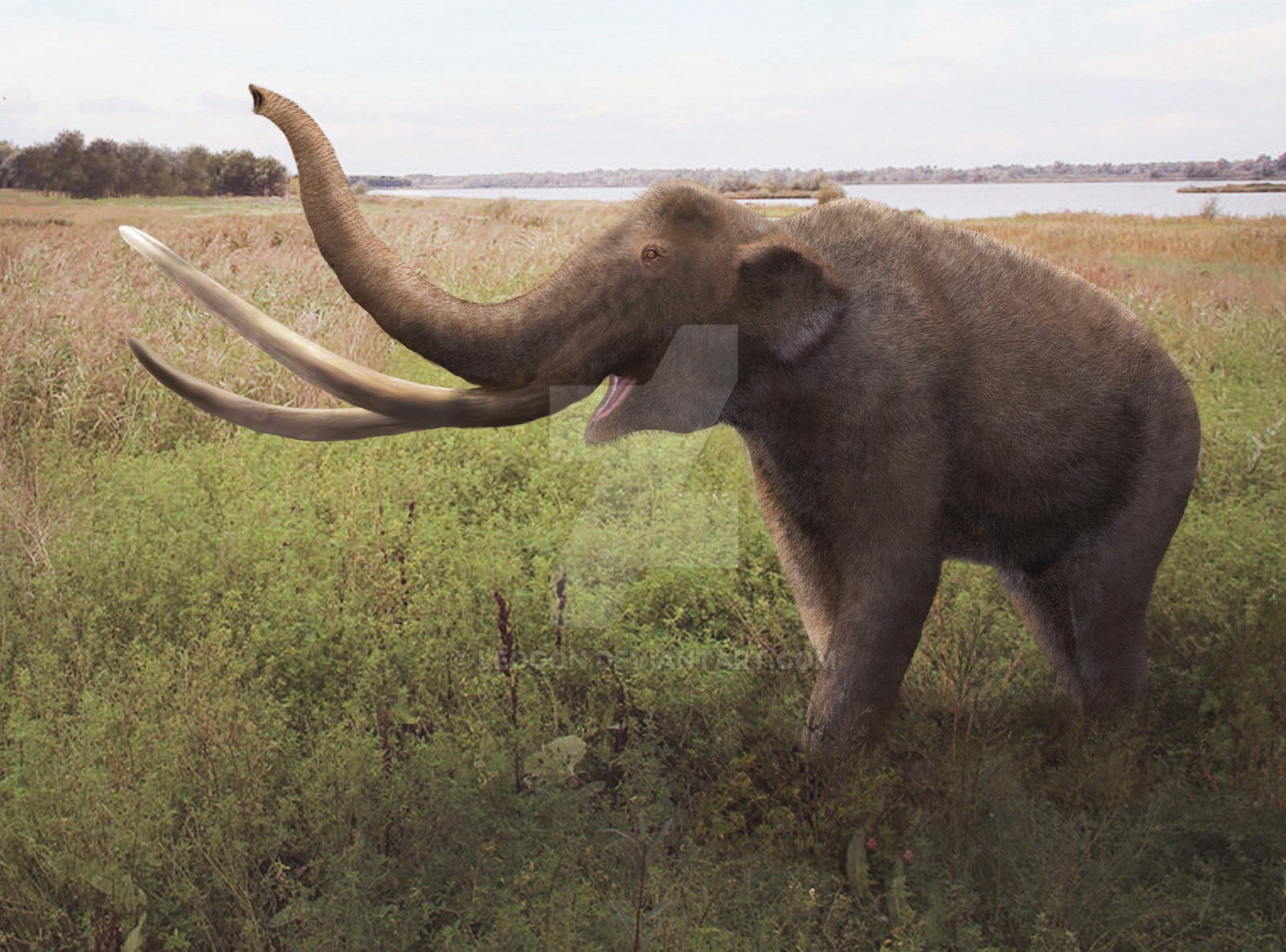|
|
Post by dinosauria101 on Mar 22, 2019 15:49:49 GMT 5
Naumann's Elephant - Palaeoloxodon naumanni  img09.deviantart.net/4c1f/i/2015/188/b/a/palaeoloxodon_naumanni_by_leogon-d8yevaj.jpg img09.deviantart.net/4c1f/i/2015/188/b/a/palaeoloxodon_naumanni_by_leogon-d8yevaj.jpgOrder: Proboscidea Family: Elephantidae Height: 2.3 to 2.8 meters Mass: ~2.14-3.86 tonnes, based on relatives Diet: Plants Age and Location: Pleistocene epoch, 500,000 to 15,000 years ago, Japan Killing apparatus: Tusks One of the smallest species in the genus Palaeoloxodon. Hunted by early people for sustenance. Daspletosaurus torosus  www005.upp.so-net.ne.jp/JurassicGallery/Dasple.jpg www005.upp.so-net.ne.jp/JurassicGallery/Dasple.jpgOrder: Theropoda Family: Tyrannosauridae Length: 8-9.9 meters Mass: 1.8-3.8 tonnes Diet: Other dinosaurs Age and Location: 75 million years ago, Late Cretaceous, Montana, United States Killing apparatus: Crushing jaws, manual claws, pedal claws (based on relatives) Thought to be the direct ancestor to Tyrannosaurus rex. Very robustly built. |
|
denis
Junior Member
 
Posts: 195
|
Post by denis on Nov 18, 2019 21:38:52 GMT 5
I think Daspletosaurus would win, thanks to it’s experience of fighting dangerous prey like Ceratopsians.
|
|
|
|
Post by dinosauria101 on Nov 18, 2019 22:04:27 GMT 5
^Agreed, tyrannosaurids are very well adapted to fight animals like this. Not to mention the Naumann's elephant is probably less formidable for its size than them.
The Daspletosaurus would probably be able to land a decisive bite on the trunk or cranium, or outflank the elephant and attack from there.
|
|
|
|
Post by DonaldCengXiongAzuma on Nov 19, 2019 11:08:50 GMT 5
The daspletosaurus might be able to bite off one of the tusks as well.
|
|
denis
Junior Member
 
Posts: 195
|
Post by denis on Dec 25, 2019 19:40:15 GMT 5
Also not to mention, the elephant lacked armor to protect itself from the bite of the Tyrannosaur. A common mistake people are making is that they compare Palaeoloxodon species to African Bush Elephants. The problem is that it’s likely it had a lifestyle kinda similar to African Bush Elephant but in appearance it would look like African Forest Elephant. The tusk weren’t robust or thick like African Bush Elephant.
|
|
|
|
Post by dinosauria101 on Dec 25, 2019 20:16:45 GMT 5
^Yes, that's true. The lack of armor (as well as exposed areas like the cranium and trunk) would help Das here quite a lot. Here's a size comp I made, using scaled down Prehistoric Fauna P. namadicus, and Franoys' Daspletosaurus. Lower, average, and max size in that order.  EDIT: Scaling down from a 500 cm tall, 22 tonne Palaeoloxodon namadicus, which appears to be this species' closest relative, gives 2.14-3.86 tonnes, about the same mass as Daspletosaurus. In this case, I fully support the tyrannosaurid here. |
|
|
|
Post by Infinity Blade on Dec 25, 2019 21:19:41 GMT 5
Palaeoloxodonts had their own novel appearance in comparison to both extant Loxodonta spp.. Just looking at them in this size comparison shows you how they're not really more similar to one or the other in appearance.  This is to say nothing of all the specific morphological characters in their bones. |
|
denis
Junior Member
 
Posts: 195
|
Post by denis on Dec 25, 2019 21:56:13 GMT 5
Palaeoloxodonts had their own novel appearance in comparison to both extant Loxodonta spp.. Just looking at them in this size comparison shows you how they're not really more similar to one or the other in appearance.  This is to say nothing of all the specific morphological characters in their bones. They do have their own appearance but their tusk aren’t the best at goring. |
|
|
|
Post by 6f5e4d on Dec 25, 2019 23:29:23 GMT 5
This fight goes to Daspletosaurus, since it's more adapted to killing with its jaws than Naumann's elephant with its tusks.
|
|
|
|
Post by Infinity Blade on Dec 25, 2019 23:33:45 GMT 5
Palaeoloxodonts had their own novel appearance in comparison to both extant Loxodonta spp.. Just looking at them in this size comparison shows you how they're not really more similar to one or the other in appearance.  This is to say nothing of all the specific morphological characters in their bones. They do have their own appearance but their tusk aren’t the best at goring. That is so tangential to overall life appearance. |
|
|
|
Post by dinosauria101 on Dec 26, 2019 3:20:16 GMT 5
Well, the tusks are not curved, but they're relatively fragile, long, and splayed out, so probably not as good weapons as ceratopsian horns or bull horns for goring.
Not to mention, the comparison I posted gives Daspletosaurus a clear advantage - the shape of the tusks means they must stab upwards, decreasing the effectiveness of the stabs, and the tyrannosaurid could land some bites in the meantime.
|
|
denis
Junior Member
 
Posts: 195
|
Post by denis on Dec 26, 2019 4:12:11 GMT 5
Well, the tusks are not curved, but they're relatively fragile, long, and splayed out, so probably not as good weapons as ceratopsian horns or bull horns for goring. Not to mention, the comparison I posted gives Daspletosaurus a clear advantage - the shape of the tusks means they must stab upwards, decreasing the effectiveness of the stabs, and the tyrannosaurid could land some bites in the meantime. The tusk were actually kinda covered near the end of the tusk. But I suggest looking at this the chart of the tusk.  |
|